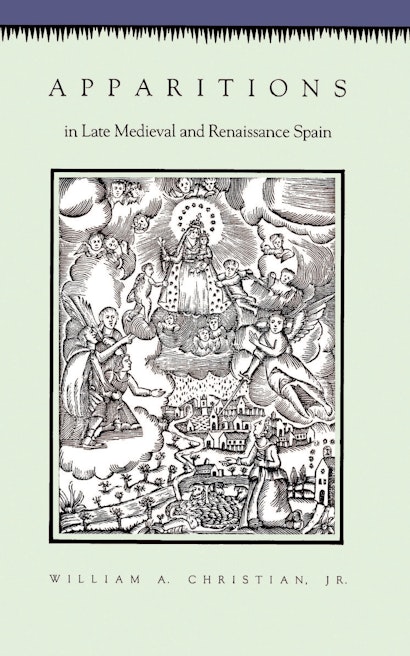The description for this book, Apparitions in Late Medieval and Renaissance Spain, will be forthcoming.
William A. Christian, Jr., is an independent scholar who lives in Las Palmas de Gran Canaria, Spain. He is the author of Person and God in a Spanish Valley and Local Religion in Sixteenth-Century Spain (both Princeton).
"About a dozen notarized accounts of apparitions, together with the pilgrimages and devotions they inspired in rural Spain from 1399 to 1523—the Spanish unabridged documents are gathered in appendices—form the core for William Christian's fascinating reconstruction of religious practices in Iberian villages. Astute commentary and a long and affectionate experience with the subject matter permit the author to place the reader as it were in a front-row seat to witness directly the face-to-face encounters villagers sometimes conducted with their divine personages—particularly with the Virgin Mary. A description so authentic flows from a profound knowledge both of the sources and of the people. We are all indebted to William Christian for making everyday religious life in late medieval Spanish villages as understandable to us today as would be a comparable account of a contemporary community in our own society."—Lionel Rothkrug, The Catholic Historical Review
"No summary can do justice to the wealth these books [Apparitions in Late Medieval and Renaissance Spain and Local Religion in Sixteenth-Century Spain] offer to a wide variety of readers, not only in posing important analytical perspectives and questions but also in making available previously unpublished or untranslated primary material."—Susan Tax Freeman, Journal of Modern History
"William A. Christian, Jr., is that rare scholar whose training in social anthropology assists rather than obscures his historical research. In Apparitions he . . . Investigates 'a series of reports of celestial visions of common people, children, farmers, shepherds' wives, servants.' The author's approach to these visions is clearly stated: 'Rather than explaining away the visions, or even explaining them, I have tried to learn from them how people experienced both the world they knew and the world they had to imagine.' He has certainly learned much. His book throws light on commonly neglected aspects of Spanish society (such as its attitude toward children) as well as on the religion of the time (for instance, the increased insistence on penance and the Passion)."—J. N. Hillgarth, American Historical Review

